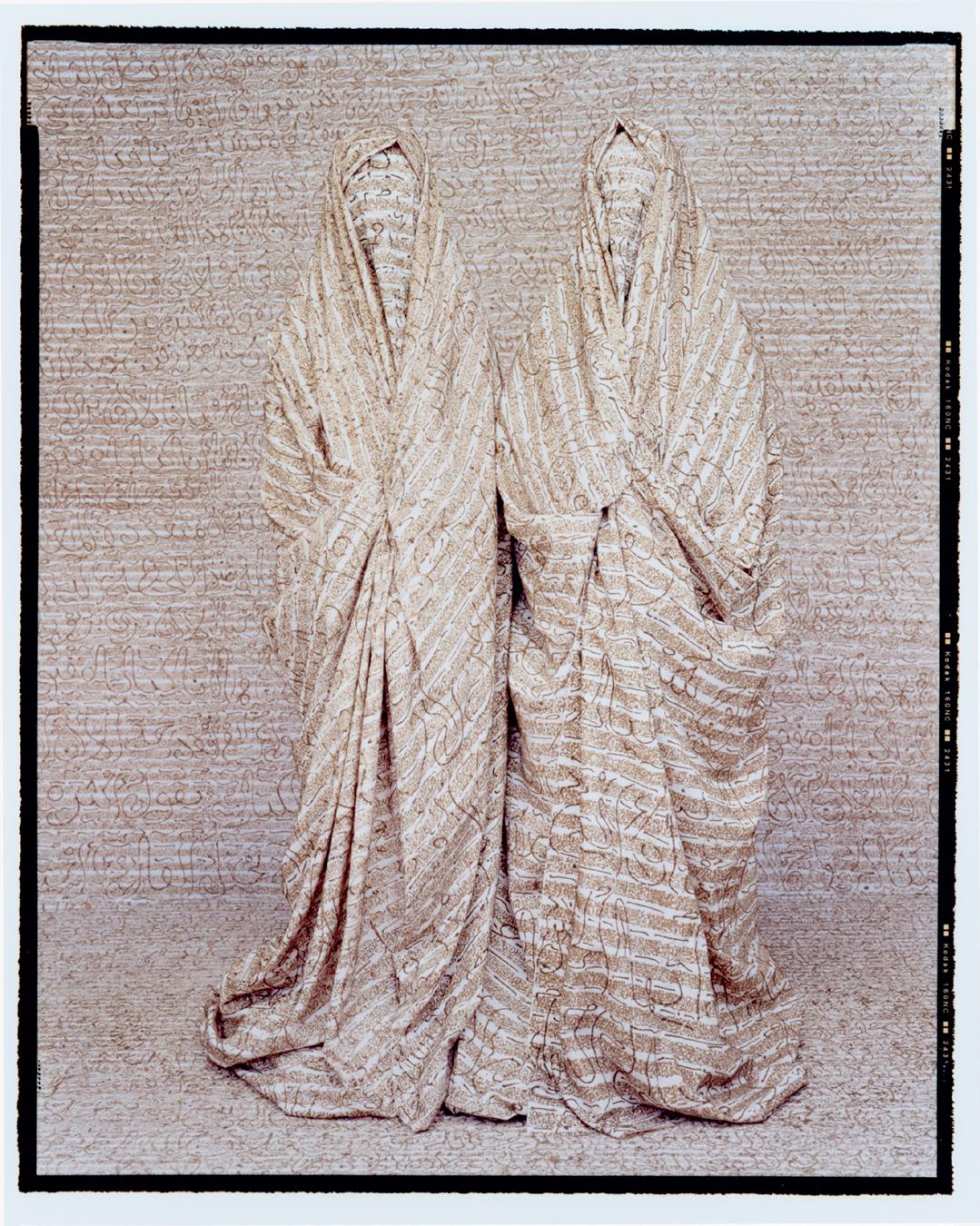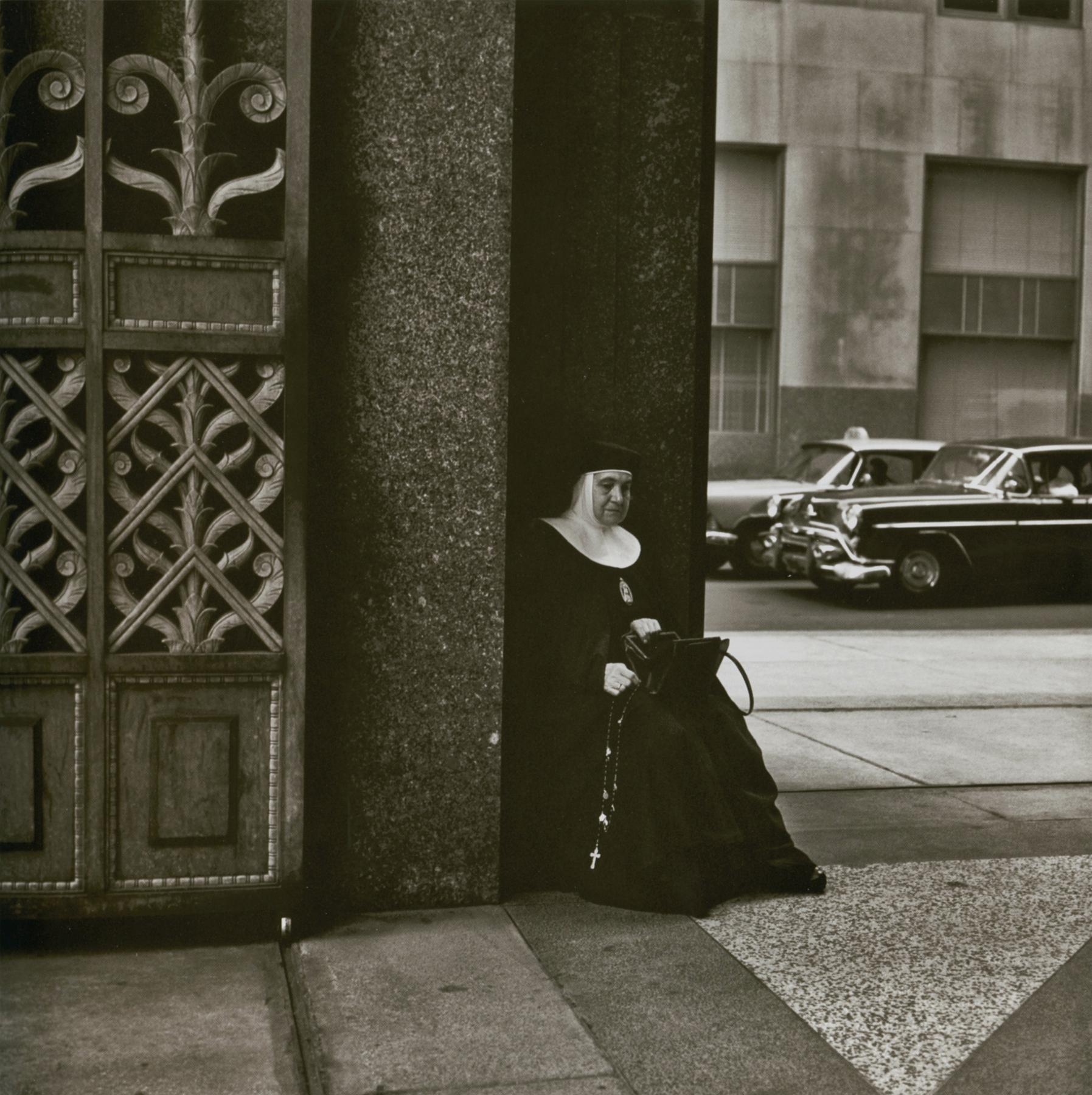Reigning Queens Modern and Contemporary Representations of Women, Power, and Religion
January–May 2023
Learning Guide

January–May 2023
Learning Guide
January–May 2023
Building on the adjoining exhibition, Beyond Eve and Mary , this exhibition examines twentieth- and twenty-first-century representations of women in art. From temptresses and monarchs to advocates and activists, Reigning Queens invites viewers to consider the ways artists have explored and challenged gender stereotypes. The included works center the bodies—covered and uncovered—of both famous and anonymous women, conveying messages of power and protest in different ways.
Exhibition support is provided by Hixson-Lied Endowment, Nebraska Arts Council and Nebraska Cultural Endowment.Pittsburgh, PA 1928–New York, NY 1987
Reigning Queens (Queen Elizabeth)

Screenprint on Lenox Museum Board, 1985
University of Nebraska–Lincoln
Gift of the Andy Warhol Foundation for the Visual Arts
U-6374.2013
Reigning Queens (Queen Elizabeth)
Created as a part of a series featuring the four queens in power in 1985, Andy Warhol based this image of Queen Elizabeth II on an official photograph released for her Silver Jubilee in 1977. Warhol’s work is the only artist’s portrait that Elizabeth did not sit for. The longest reigning woman monarch in history, she used her intentionally constructed royal image as a weapon against what historian Andrew Graham-Dixon describes as “the historic chauvinist preconception that queens must be weaker than kings.”

Cleveland, OH 1926–New York, NY 2009
We are Pro-Choice Silkscreen, 1992

University of Nebraska–Lincoln University Collection
U-4697.1996
We are Pro-Choice
In this work, artist and activist Nancy Spero juxtaposes women from different cultures and time periods—all in control of their own bodies and, through the title, proclaiming their right to choose. The name “Artemis,” included in the white text written across the work, refers to the figure on the left: the ancient Greek goddess of childbirth, shown reaching for her arrow. The name “Löwenfrau (Lion Woman)” refers to the central figure: a small statuette carved from a mammoth tusk approximately 40,000 years ago that was significantly damaged by a geologist who hastily unearthed it in a cave in southwest Germany in 1939. While 220 pieces of the object were reassembled in 1988, an estimated thirty percent of the body is missing. Disputes arose over the gender of the figure, which was originally called “Lion Man” by archaeologists, and the piece became an icon of the women’s movement in the late 1980s.

GHADA AMER

born Cairo, Egypt 1963
REZA FARKHONDEH
born Iran 1963
Love Me
Lithograph with hand-sewn elements, 2006
Published by Landfall Press, Chicago
University of Nebraska–Lincoln
Olga N. Sheldon Acquisition Trust
U-6671.2017
Love Me
For me it is as hard to be a sleeping beauty as it is to be a sex symbol; both of them are useful for women in order to gain power and freedom.
Beginning in 1992, Ghada Amer began incorporating well-known female characters from animated Disney films—such as Cinderella, Snow White, Tinkerbell, and, as in this piece, Princess Aurora (aka Sleeping Beauty)—into her work. With only eighteen spoken lines and approximately eighteen minutes of screentime in the 1959 Disney movie, Sleeping Beauty speaks less than any other speaking main character in a feature-length animated Disney film. Her image is presented here against a floral backdrop made by Amer’s collaborator, Reza Farkhondeh, and the words “LOVE ME” embroidered onto the paper by Amer.

JUDITH SHEA
born Philadelphia, PA 1948
Venus
Soft-ground etching, 1990

University of Nebraska–Lincoln
Anna R. and Frank M. Hall Charitable Trust
H-2957.1991
This print is after the eponymous sculpture
Judith Shea created in 1989 of a white castmarble torso on a stone base, behind which a white organza sheath dress was pinned to the wall. The nude sculpture is based on a small figure of Aphrodite, the ancient Greek goddess of sexual love and beauty, identified as Venus by the Romans. The form-fitting sleeveless garment, which has been closely associated with Shea since she left the fashion industry to create art in the late 1970s, stands in for a more contemporary female body that is present through its absence and chastely clad.
Judith Shea’s sculpture Shield is on view in the Great Hall.
 JUDITH SHEA
Venus
JUDITH SHEA
Venus
Omaha, NE 1970–Omaha, NE 2013
Girl (#8) , from the Black as Pitch, Hot as Hell series Acrylic and latex paint on carved plywood, 2006

Sheldon Art Association
Gift of Kop Ramsey in memory of her sister, Della Kopperud Stover S-900.2013

Rotterdam, Netherlands 1904–East Hampton, NY 1997
Woman
Charcoal and oil on paper, 1954
University of Nebraska–Lincoln
Anna R. and Frank M. Hall Charitable Trust
H-362.1955
With an exaggerated form and angular features, Willem de Kooning’s Woman embodies the tension between a recognizable female figure and the energetic mark-making of action painting. Some interpret the artist’s gestural slashes of paint as aggressive and the way in which he depicted the female nude as menacing or violent. To these readings de Kooning once famously asserted, “Beauty becomes petulant to me. I like the grotesque. It’s more joyous.”
 WILLEM DE KOONING
Woman
WILLEM DE KOONING
Woman
born Marrakesh, Morocco 1956
Les Femme du Maroc, #25, A & B [ The Women of Morocco, #25, A & B ]
Chromogenic prints mounted on aluminum, 2006


University of Nebraska–Lincoln
Robert E. Schweser and Fern Beardsley Schweser Acquisition Fund, through the University of Nebraska Foundation
U-5612.1–2.2011
At least among those I have encountered, Arab women are having trouble with both worlds, Arab and Western. The Orientalist narrative is being projected on them from both directions. They are either weak and in need of rescue or jezebels who need to be brought under control. In my photographs, I try to clear away these projections so that—here is my hope—they can be seen as powerful presences in their own right.
—Lalla Essaydi, from an interview inBy fully cloaking the subjects of her largescale diptychs, Lalla Essaydi disrupts the nineteenth-century Orientalist tradition of overtly sexualizing Arab women through gratuitous nudity. She has covered the fabric that veils these two women and the photographs’ backdrop with Arabic calligraphy using henna, a pigment customarily applied to females to celebrate rites of passage. This painstaking process takes Essaydi more than six months to complete.

 Les Femme du Maroc, #25, A & B [ The Women of Morocco, #25, A & B ]
Les Femme du Maroc, #25, A & B [ The Women of Morocco, #25, A & B ]
born Rome, Italy 1938
Untitled (Woman and Store Window)

Gelatin silver print, 1963
University of Nebraska–Lincoln
Gift of the artist
U-482.1964
VIVIAN MAIER
New York, NY 1926–Chicago, IL 2009
Untitled (Nun)

Gelatin silver print, 1959, printed 2013
University of Nebraska–Lincoln
Purchased with funds from the Dr. Richard S. Hay Memorial U-6316.2013
Portland, OR 1883–San Francisco, CA 1976
Adam and Eve (The Supplicant)

Platinum print, 1912, printed later University of Nebraska–Lincoln
Anna R. and Frank M. Hall Charitable Trust H-1168.1966
JOEL-PETER WITKIN

born New York, NY 1939
The Wife of Cain
Gelatin silver print, 1981
University of Nebraska–Lincoln
Anna R. and Frank M. Hall Charitable Trust
H-2600.1983
Joel-Peter Witkin describes his carefully structured tableaux as “sacred work,” often deriving from biblical subjects or his prayers. The subject of this photograph, the wife of the biblical figure Cain, is taken from the Book of Genesis. The unnamed, pregnant woman is the daughter of Eve and therefore Cain’s own sister. As is his practice, Witkin scratched out elements and distressed the photo negative, heightening the composition’s theatricality to produce what he has described as “profound emotional dichotomies within the viewer.”
 The Wife of Cain
The Wife of Cain

Hobita, Romania 1876–Paris, France 1957
Princesse X
Marble with Caen limestone base, 1909–1916
University of Nebraska–Lincoln
Gift of Mrs. Olga N. Sheldon in memory of Adams Bromley Sheldon U-418.1963
Princesse X has its origins in an earlier sculpture depicting the notoriously vain Princess Marie Murat Bonaparte of France (1882–1962), who allegedly always carried a mirror with her. Enchanted by the graceful way she studied her own reflection, Brancusi initially made a marble portrait of her gazing downward. As he reworked his depiction of the princess over a seven-year period, Brancusi dramatically reduced her anatomical structure to a rather phallic appearance. The featureless face, elongated neck, and rounded breasts of Sheldon’s version have an almost industrial, streamlined precision, even though the work was carved by hand.
